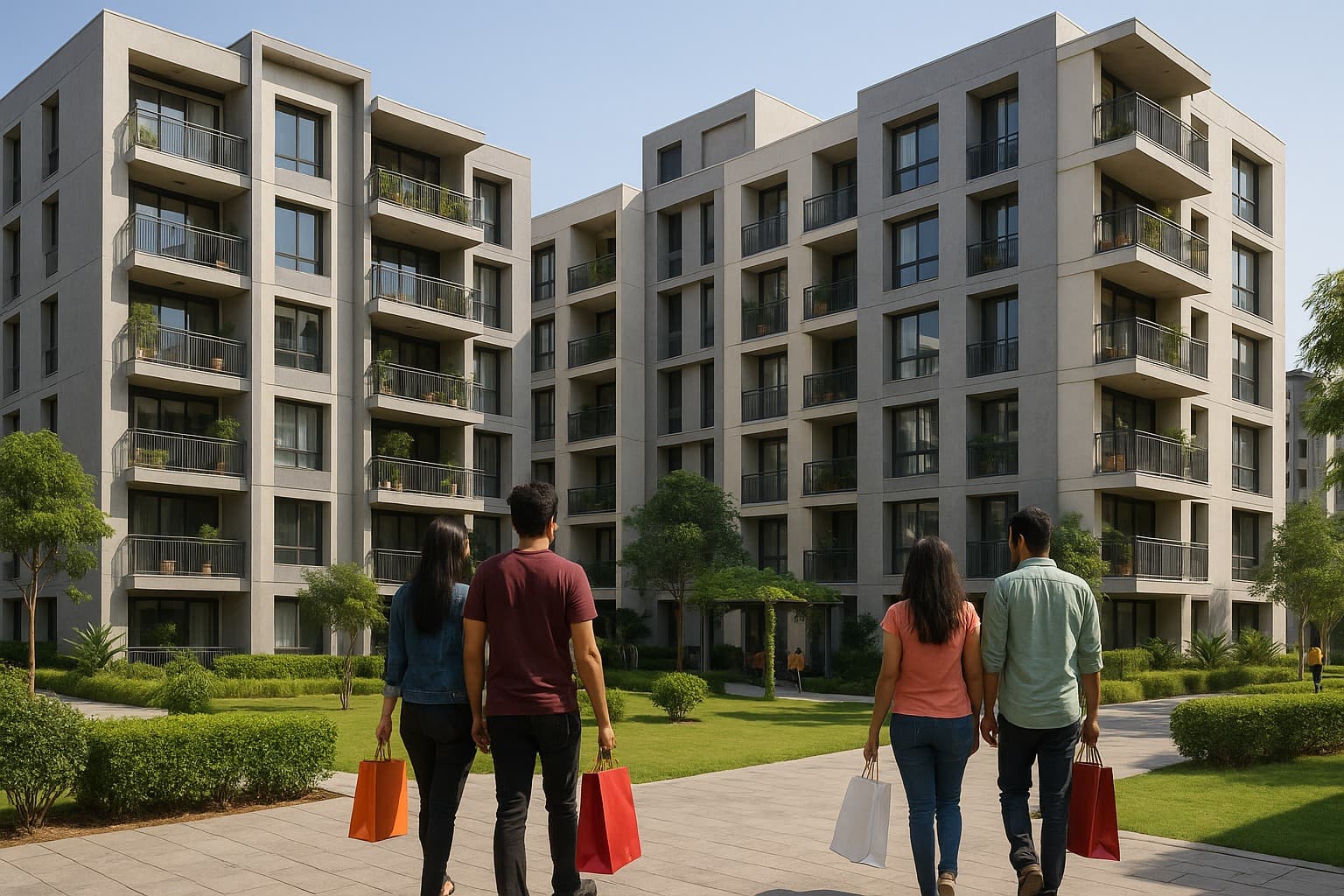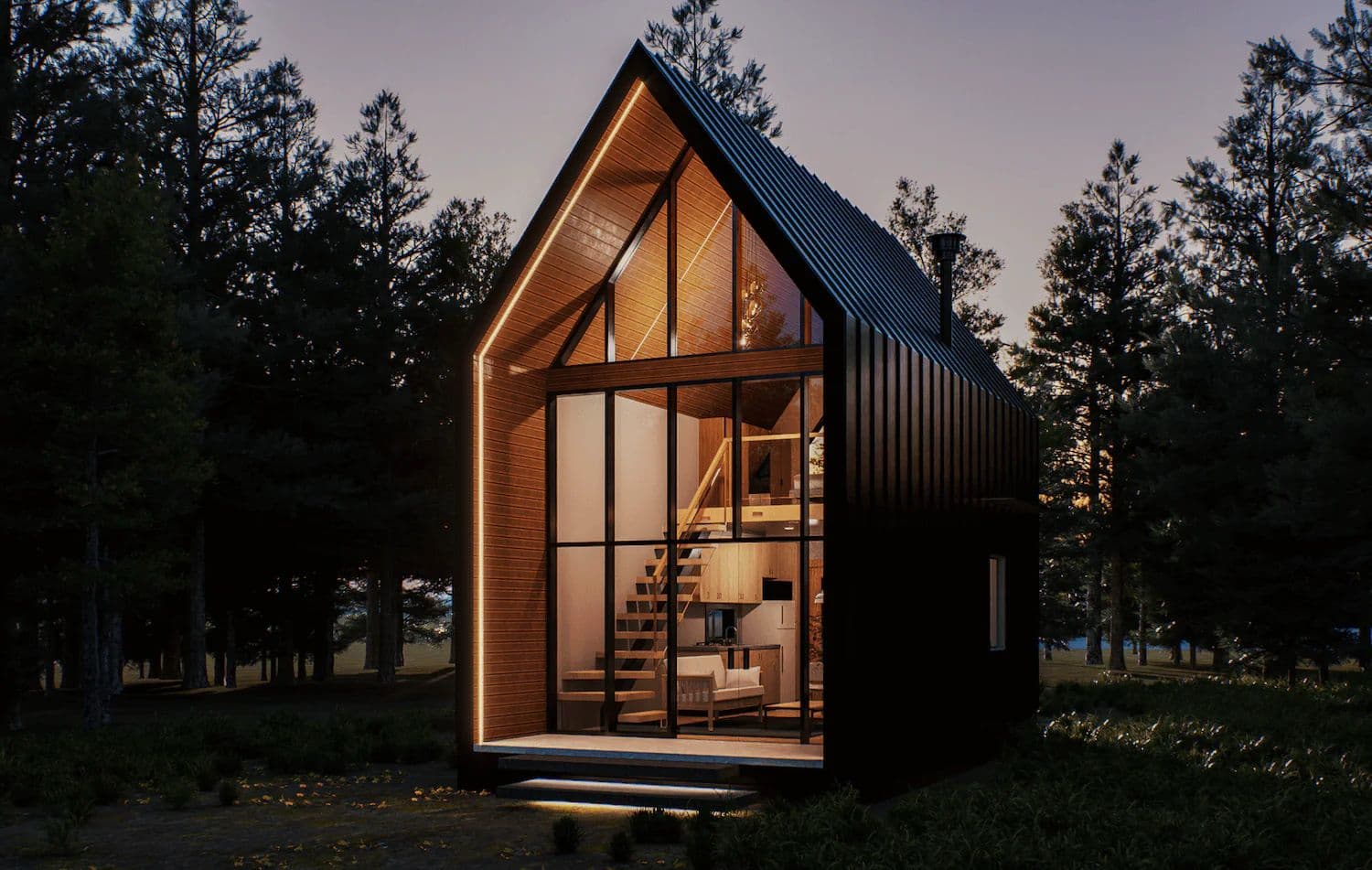Why Compact Homes Are Popular in India: A Comprehensive Guide
Summary
Compact homes are gaining popularity in India due to affordability, location, and lifestyle shifts. They're particularly favored by millennials and first-time buyers in urban areas like Mumbai, Pune, and Bangalore, offering a practical housing solution.

Why Compact Homes Are Popular in India
If you take a walk through any modern Indian city today—be it Mumbai, Pune, or Bangalore—you’ll notice one common trend in the housing market: homes are getting smaller, but smarter. The age of sprawling apartments and massive independent houses is gradually giving way to compact homes in India. Whether it’s a young IT professional in Bengaluru opting for a stylish 1BHK near her office or a first-time buyer in Mumbai choosing a studio in the suburbs, compact living is no longer seen as a compromise. In fact, it’s becoming the most practical and popular housing choice for urban Indians.
The Rise of Compact Homes in Urban India
The surge in small apartments demand isn’t just about affordability, although that’s certainly a big part of it. Urban India has undergone massive changes in the past decade—job growth, migration to metro cities, and skyrocketing property prices. As a result, many buyers find affordable housing in India in the form of compact homes, which allow them to own property without being crushed under long-term debt.
Developers, sensing the pulse of the market, are increasingly offering real estate compact homes that make the most of every square foot. Clever layouts, modular kitchens, multipurpose furniture, and shared community amenities are redefining how Indians perceive space.
Millennials Driving the Compact Housing Wave
The popularity of compact homes among millennials cannot be overstated. Unlike earlier generations, millennials are not chasing giant houses as status symbols. They prefer financial flexibility, travel, and experiences. For them, a 1BHK trend in India represents independence and practicality, not limitation.

A compact home allows a young buyer to own property in a prime location, reduce commuting time, and still save for other goals. That’s why in the compact homes vs luxury housing demand debate, millennials are clearly leaning toward affordability and convenience over luxury and excess.
Why Small Apartments Are Trending in India
So, why are small apartments trending in India? There are four big reasons:
Affordability: Rising property costs in cities like Mumbai and Delhi make large homes unattainable for most middle-class buyers. Compact homes bridge that gap.
Location Benefits: Compact homes are usually built in areas close to workplaces, schools, metros, and social infrastructure, unlike larger houses that may be in far-flung locations.
Lifestyle Shifts: With cafés, gyms, co-working spaces, and malls becoming everyday hangouts, homeowners don’t feel the need for oversized personal spaces.
Easy Maintenance: Less space means lower upkeep costs and fewer responsibilities, something many busy professionals appreciate.
This shift explains why affordable compact living in Indian metros is becoming the go-to choice for buyers across income groups.
Compact Homes vs Luxury Housing: A Balanced View
It’s important to note that luxury housing still has its own strong market. But in the battle of compact homes vs luxury housing demand, compact homes enjoy one crucial advantage—they are accessible to a much larger audience.
Luxury homes often attract high-net-worth individuals and investors, while compact homes target a broader base: middle-class families, newly married couples, and young professionals. Developers now design budget-friendly compact homes with modern amenities like gyms, pools, gardens, and security, giving buyers a taste of luxury without the exorbitant price tag.
City-Wise Snapshot: Where Compact Homes Shine
Mumbai
In the country’s costliest market, compact housing growth in Mumbai is not just a trend but a survival necessity. With property prices beyond the reach of most, 1BHKs and micro-apartments offer buyers a realistic chance to own a home in the city.
Pune
The IT and education hub has a large population of young professionals and students. No surprise then that affordable compact living solutions for first-time buyers are seeing a boom here. Developers in Pune often package smaller units with shared clubhouses, co-living facilities, and modern township amenities.
Bangalore
India’s Silicon Valley is witnessing the compact homes trend among young professionals in metro cities like never before. Proximity to tech parks, better work-life balance, and modern designs are driving demand for smaller but smarter living spaces.
Together, these three cities represent the heart of the compact housing growth in Mumbai, Pune, and Bangalore—a trend that’s likely to spread further into Tier-2 cities as urbanization deepens.
Compact Homes for First-Time Buyers

For first-time buyers, compact homes are more than just affordable—they’re a doorway to financial independence. Backed by government incentives under affordable housing schemes, these units make it easier for young buyers to secure financing and pay EMIs.
Beyond the financial aspect, there’s an emotional pull too. Owning a compact home means stability, security, and pride—even if it’s not a sprawling apartment. That’s why affordable compact living solutions for first-time buyers are at the heart of India’s housing growth story.
Looking Ahead: Compact Homes in 2025 and Beyond
Experts believe the demand for compact and affordable housing in India 2025 will continue to grow, especially as developers innovate with smart layouts and sustainable designs. Smaller doesn’t mean less comfortable anymore—it means smart, efficient, and modern.
Moreover, compact housing isn’t just a metro phenomenon. Tier-2 cities like Jaipur, Nagpur, and Coimbatore are also seeing demand rise for smaller homes as people look for affordable options without leaving their cities.
Ultimately, why compact homes are gaining popularity in Indian real estate boils down to one thing: they align with the financial and lifestyle realities of today’s buyers.
Conclusion
Compact homes represent a cultural shift in Indian housing. No longer dismissed as “too small,” they are now seen as affordable compact living solutions for first-time buyers and young professionals alike. From compact housing growth in Mumbai, Pune, and Bangalore to their spread into Tier-2 cities, compact homes are shaping the future of Indian real estate.
They offer what buyers today truly want: affordability, accessibility, and adaptability. In a world where every square foot counts, compact homes prove that smart design and location can be more valuable than sheer size.
Summary (100 words)
The rise of compact homes in India highlights how lifestyle and financial realities are reshaping the housing market. With small apartments demand growing in cities like Mumbai, Pune, and Bangalore, compact homes have become the preferred choice for millennials, young professionals, and first-time buyers. Offering affordability, location advantages, and ease of maintenance, these homes balance practicality with comfort. The 1BHK trend in India is no longer seen as a compromise but as a smart investment. By 2025, the demand for compact and affordable housing in India will continue to grow, making compact homes a lasting feature of the country’s real estate landscape.
